The Romans left an important architectural legacy in Spain. Throughout the country, from Navarre to Andalucia and from Extremadura to Catalonia, impressive Roman monuments can still be admired.
Between 218 B.C. and the beginning of the fifth century A.D., Romans ruled the Iberian Peninsula – then called Hispania – and built great architectural works to capture the grandeur of Rome.
Here are 12 of the most famous Roman monuments in Spain.
Roman Theatre of Merida – Badajoz (Extremadura)
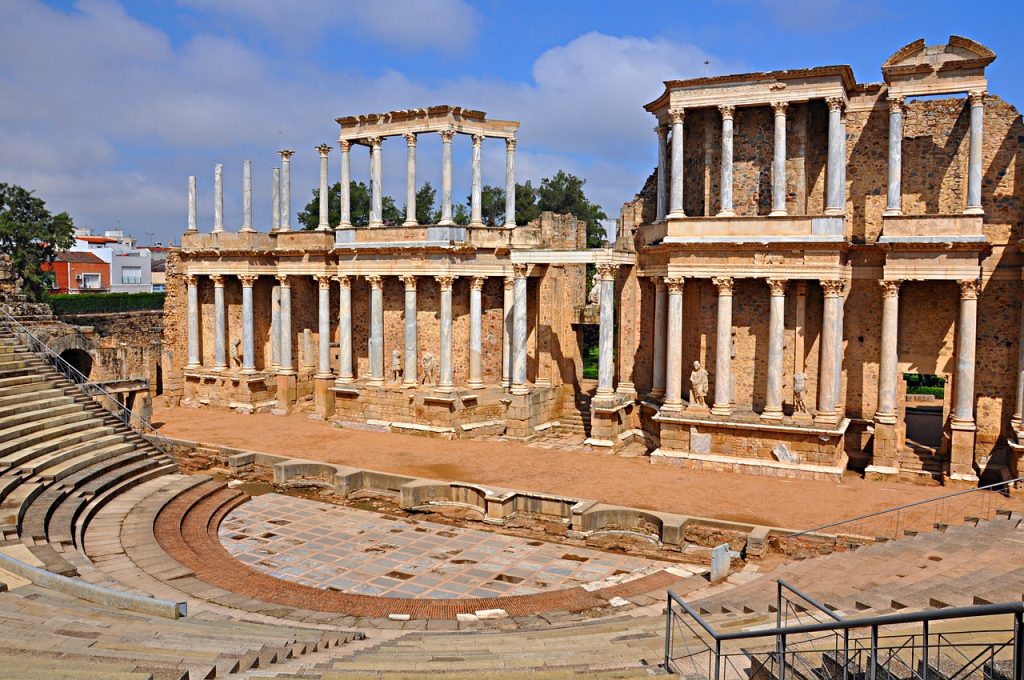
The Roman Theatre of Merida is one of the most famous Roman monuments in Spain. Marcus Vipsanius Agrippa, friend, son-in-law and loyal adviser of Emperor Augustus (known for the Pantheon of Agrippa in Rome), commissioned a theatre in the city of Emerita Augusta in the years 15 and 16 BC. Today, this theatre is one of the most precious Roman monuments in Spain. Together with the amphitheatre, it is part of the archaeological site of Merida; a UNESCO World Heritage List since 1993.
Aqueduct – Segovia (Castile and Leon)
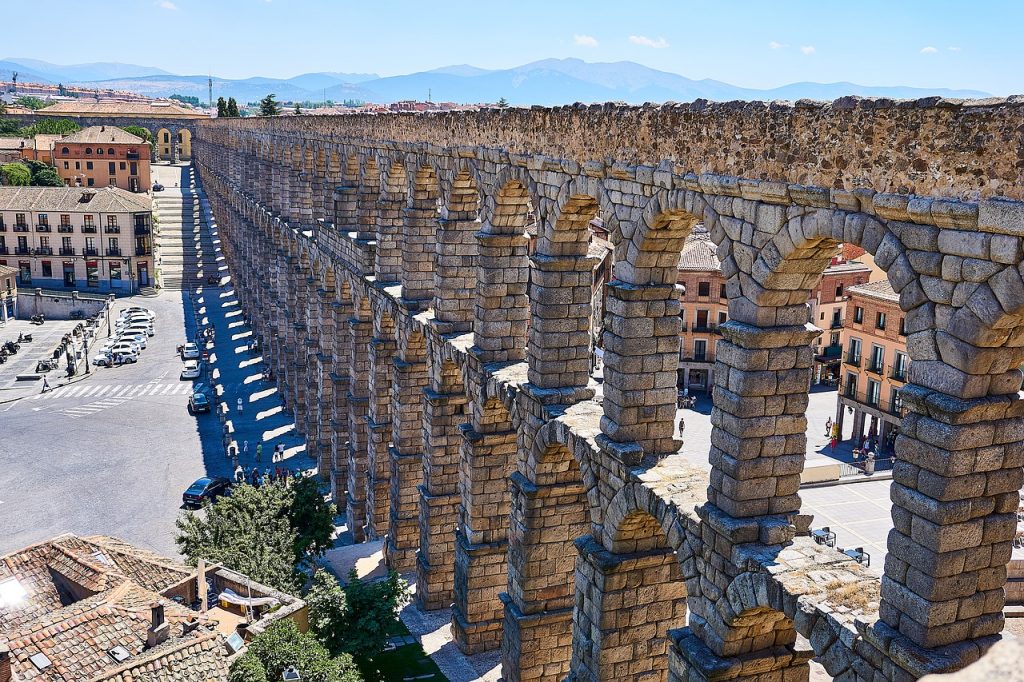
Built at the beginning of the 2nd century AD, the spectacular Aqueduct of Segovia is an imposing structure. 15 kilometres long, it has 166 arches made of granite stone from the Guadarrama, formed by axial slats joined together without a bond. It is an architectural masterpiece. You can admire its highest point (28 metres) from Plaza Azoguejo in Segovia.
Archaeological Park of Segóbriga – Cuenca (Castilla la Mancha)
This Roman town, with Celtic elements, is in the area of Cabeza de Griego in the town of Saelices, Cuenca. Construction began around 78 AD, according to a huge inscription found in the remains of the ruins. Segóbriga was economically important to the empire because of the mineral lapis specularis, found in hundreds of mines across the province of Cuenca. The mineral was used for building windows and floors.
Baelo Claudia – Cádiz (Andalucia)
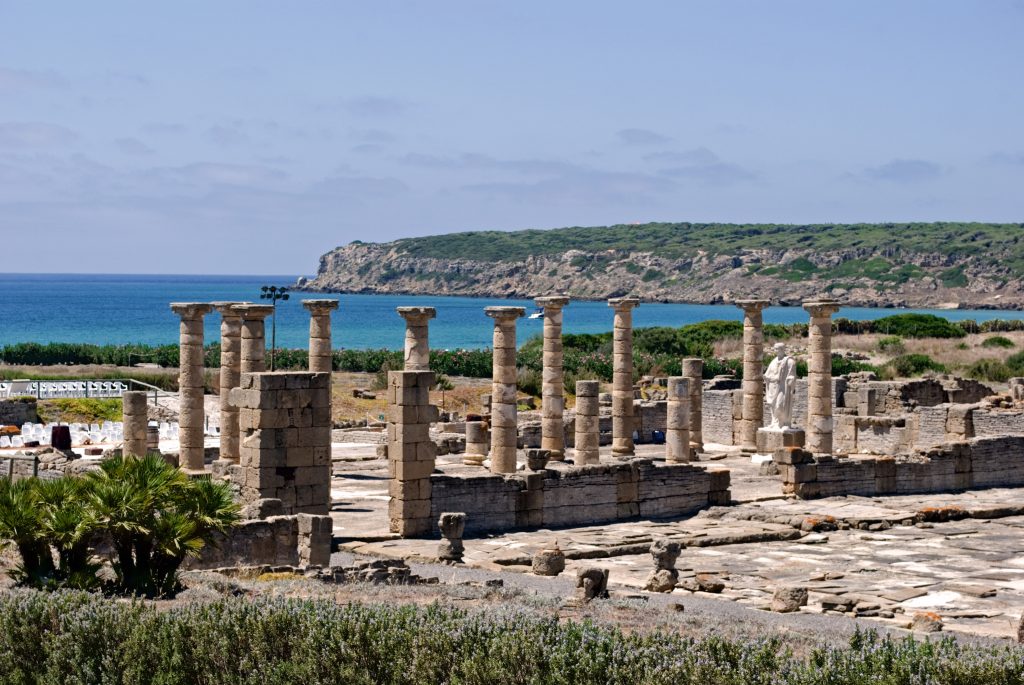
Baelo Claudia in Tarifa is an archaeological site which is also a National Historical Monument. Unfortunately, an earthquake hit this city hard in the 3rd century. Many settlers left with only a core population inhabiting it until the beginning of the 7th century. Then it was completely abandoned.
Italica – Seville (Andalucia)
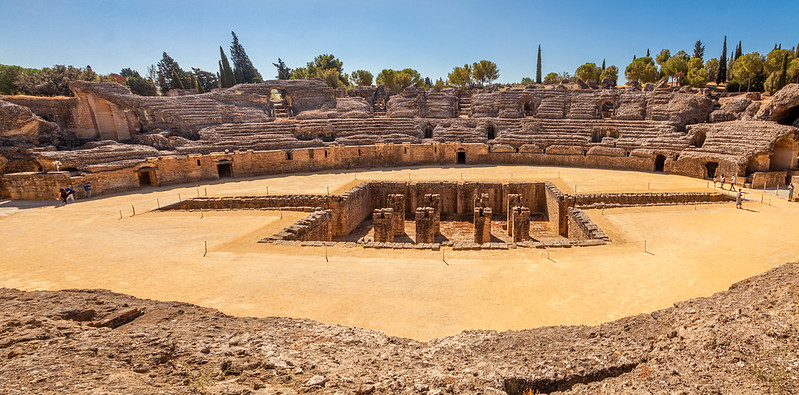
Italica is a spectacular, very well preserved Roman city dating from 206 B.C. Situated in the lower reaches of the Guadalquivir, in the town of Santiponce between Seville (Hispalis) and Alcalá del Rio (Ilipa), it had an important strategic role. With 52 hectares, it was both economically and politically-military important in times of the High Roman Empire. The ruins of the huge amphitheatre and Trajan’s temple are a sight to behold.
Roman theatre – Cartagena (Murcia)
The Roman theatre of Cartagena, built between 5 and 1 B.C., had a capacity for about 7,000 spectators. The theatre remained in use until the 3rd century, when several buildings were erected. The building style is typical of the official architecture of Emperor Augustus, the first emperor of Rome.
Tarraco – Tarragona (Catalonia)
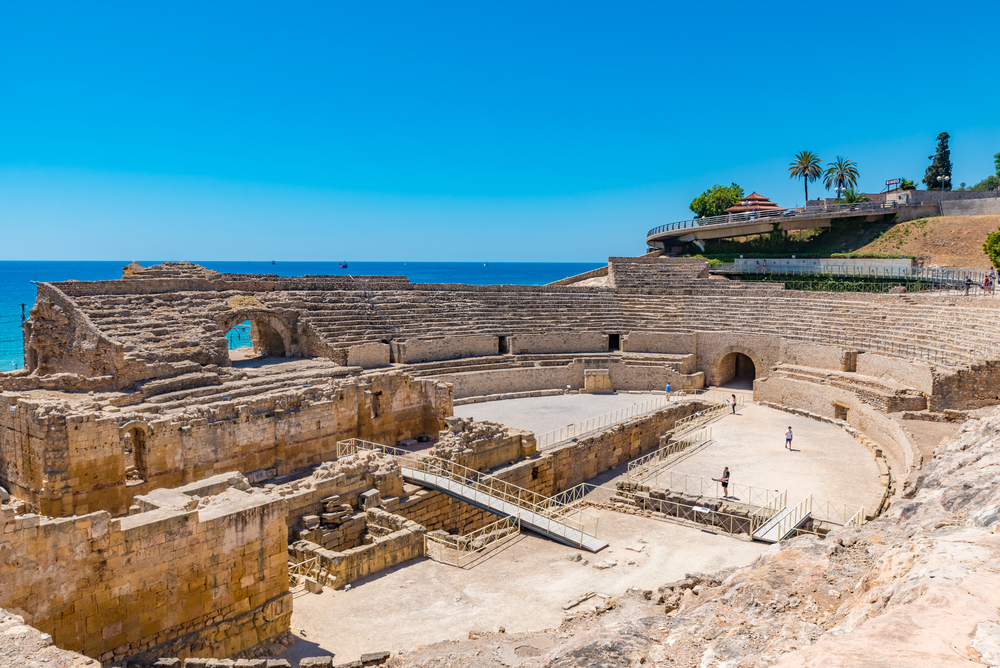
The old Roman city Tarraco was one of the most important cities of Hispania and capital of the province Hispania Tarraconensis or Hispania Citerior, during the Roman Empire. Before the Roman period, Iberians populated the municipality, mainly in the valley of the Ebro. They traded with Greeks and Phoenicians from the coast. The Roman remains in Tarragona are of great value for the urban planning development of many capitals around the world. Furthermore, it provides insight into the history of the Mediterranean in antiquity. This is why UNESCO included it on the World Heritage List.
Roman Villa of the Muses – Arellano (Navarre)
The Roman Villa of the Muses, owes its name to the fascinating discovery of the large Roman mosaic depiciting ‘the Muses’. A reproduction of the mosaic is on show in the National Archaeological Museum. The mosaic owes its name to the depiction of the nine goddesses and their masters. The Romans built the villa between the first and the fifth centuries AD.
Ampurias – Girona (Catalonia)
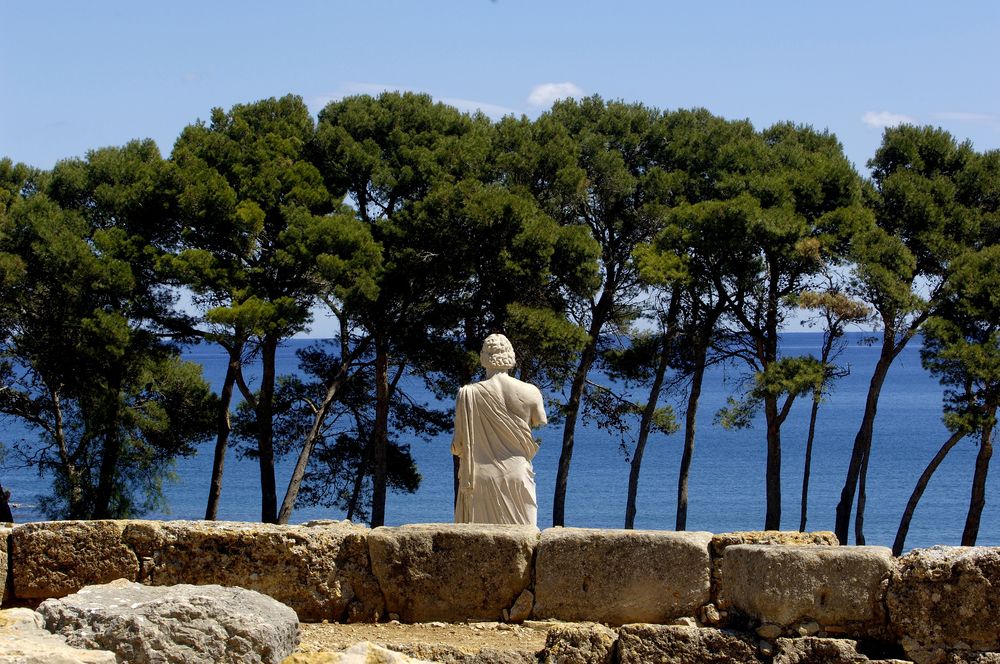
Historians agree the city of Ampurias was the gateway of both Greek and Roman culture to the Iberian peninsula. Founded in 575 BC by settlers from Focea, the city was an important trading enclave in the western Mediterranean, due to its access to the sea. In this enclave, remains of a Greek city (Emporion) and of a Roman city (Emporiae) have been preserved.
Roman Bridge of Alcántara – Cáceres (Extremadura)
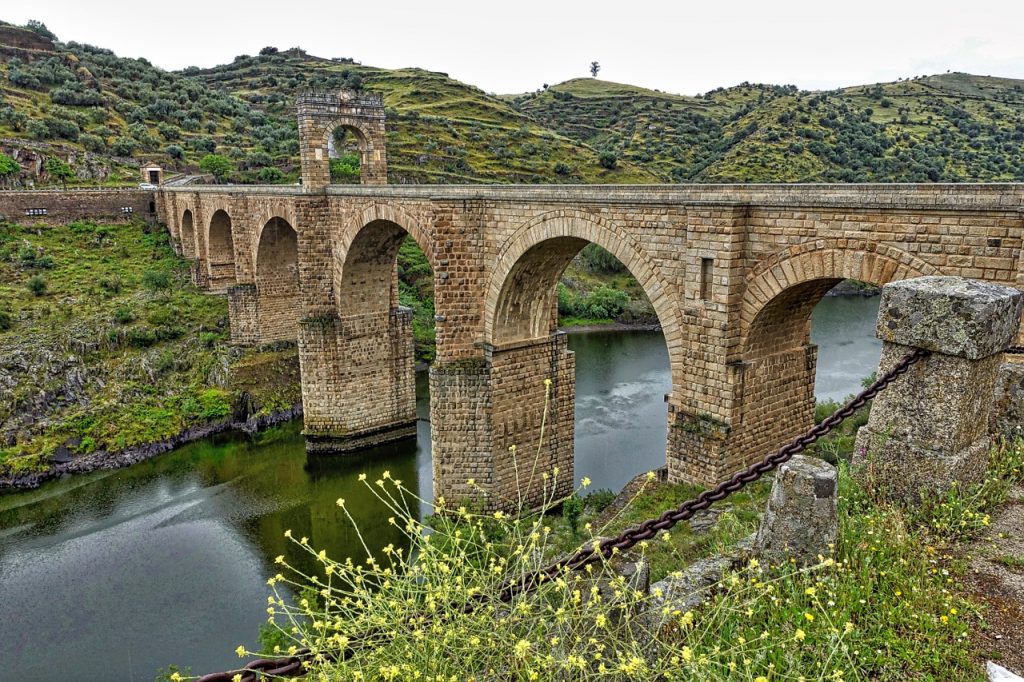
The Roman Bridge in the city of Alcántara (meaning bridge in Arabic) is one of the best Roman monuments of Spain. This bridge, built over the Tagus River in the 2nd century AD, clearly shows the three Roman qualities required for this type of construction: that it should be useful, solid and beautiful! The architect left an inscription on the Roman bridge that reads Pontem perpetui masvrvm in secula mundi: the bridge that will stand in all the centuries of the world.
Gold mines of Las Médulas – León (Castile and León)
The gold mines of the Médulas, located in El Bierzo, were the largest open pit gold mines of the entire Roman Empire. Today, it is a ‘parque cultural’ of unparalleled beauty. In this remarkable and beautiful landscape, the environment has changed considerably. Now it is forming a unique landscape of reddish sand, which today is partly covered by an abundant vegetation of oak and chestnut trees.
Roman Walls of Lugo – Lugo (Galicia)
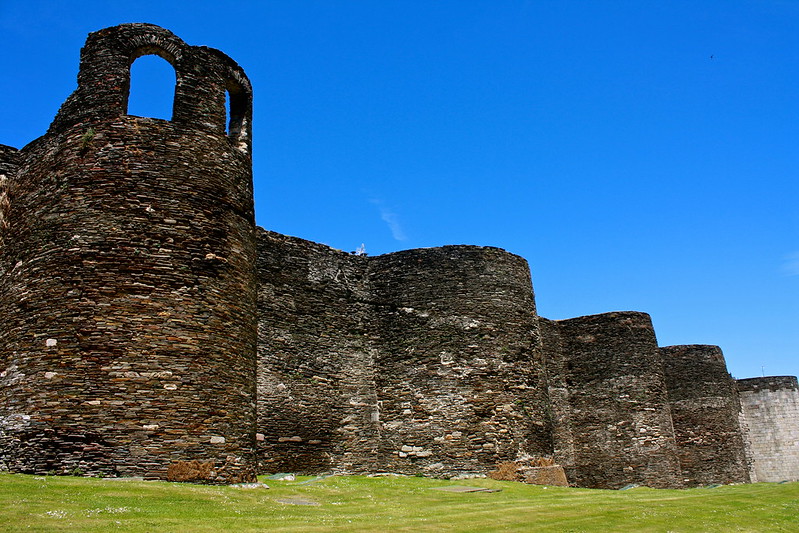
The walls of Lugo are the only Roman walls in the world that are still complete. They received UNESCO World Heritage status in 2000. The walls surround the historic centre of the city. The Romans built the grandiose structure more than 17 centuries ago. Is is over 2 km long, has 10 gates and 71 towers of the original 85.


